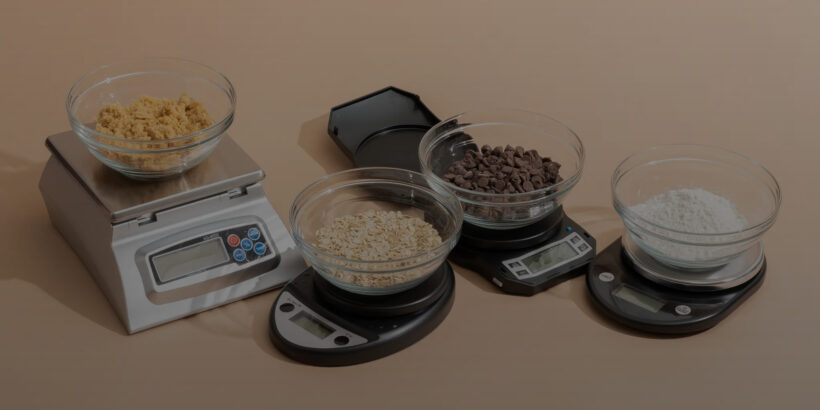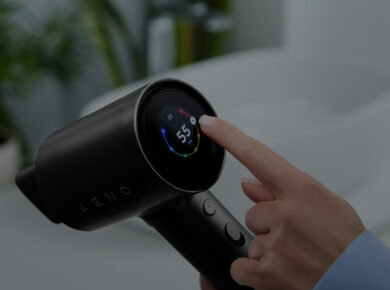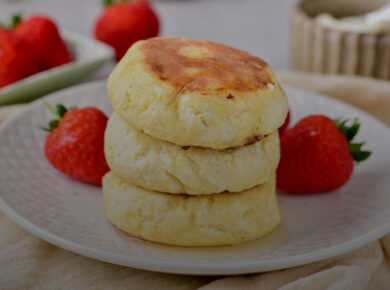Should I Buy a Food Scale
Many people consider kitchen scales unnecessary. However, if you bake cakes, follow specific diets, or tackle any other tasks requiring strict adherence to a recipe, you will not agree with this statement.
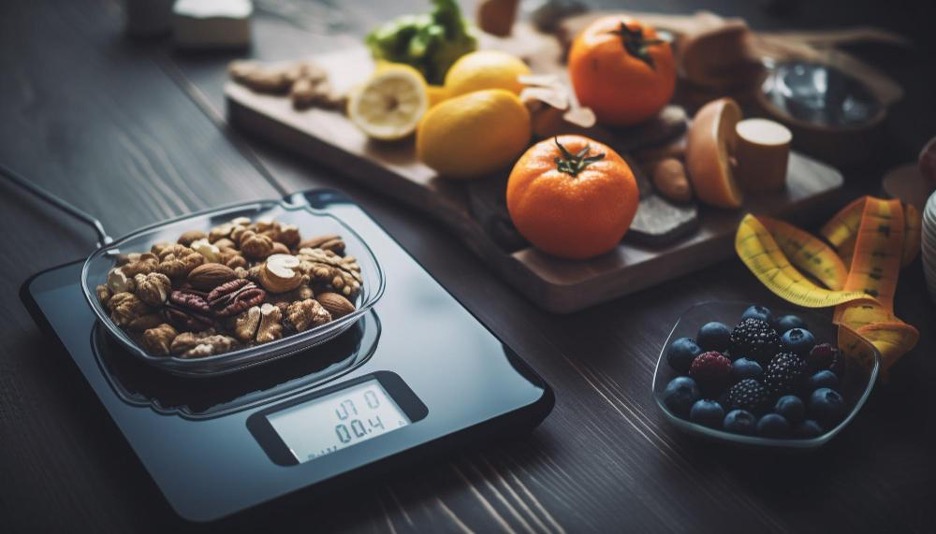
You may ask, “But how did people measure ingredients before food scales became a staple in kitchens?” Well, it certainly wasn’t as straightforward for them as today. Just look through some facts:
- In Ancient Egypt, traders relied on scales with stones as counterweights to measure grains and spices.
- During the Middle Ages, bakers and cooks lacked standardization and accuracy. They often used handfuls, cups, and even their intuition.
- The introduction of mechanical kitchen scales in the 18th and 19th centuries marked a significant change, primarily benefiting professional bakers and pharmacists.
- By the end of the 20th century, digital scales had transformed cooking by providing instant, accurate measurements down to fractions of a gram.
So, what is a kitchen scale used for today? They have become indispensable for home cooks and professionals alike. With this compact appliance, you can ensure a consistent and precise composition for every dish!
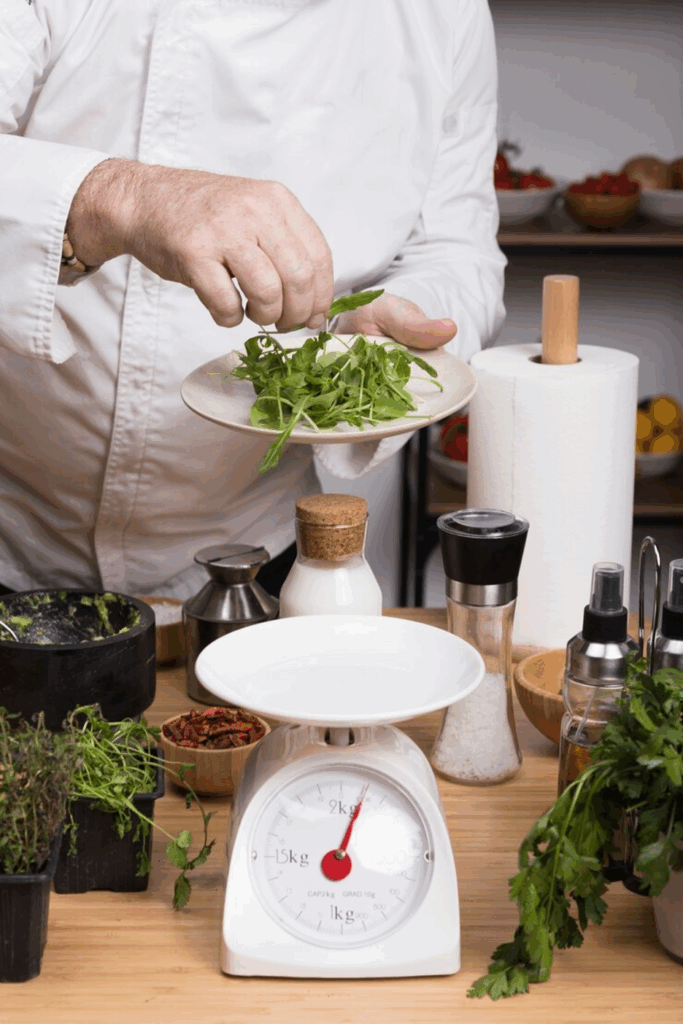
5 Good Reasons to Use a Kitchen Scale
Imagine you’re experimenting with a new recipe for the perfect homemade pizza dough. The instructions say, “Use one cup of flour.” But how much is that? If you add too much, the dough can turn out dry. If you add too little, it might become too sticky. That’s where a kitchen scale proves to be invaluable.
Many people overlook the importance of accurate measurements. However, professional chefs and bakers always rely on them. Why? Here are 5 compelling reasons.
Precision is key to achieving perfect results
Cooking is an art, but baking is a precise science. When tackling delicate recipes like soufflés, macarons, or artisan breads, even a tiny error in measurement can significantly alter the final product’s texture, taste, and appearance.
For instance, did you know that one cup of flour can weigh between 120 and 150 grams? No magic ― it all depends on how you scoop and pack the flour. This 30-gram difference can cause your cookies to be dense rather than light and airy.
So, what does a food scale do? It helps eliminate the guesswork behind baking failures, ensuring you achieve consistent and perfect results every time without complications.
Portion Control and Healthy Eating
Do you like to maintain a balanced diet? If so, consider using a kitchen scale! Accurately measuring your ingredients can help you track your calorie intake and manage portion sizes effectively.
For instance, a typical serving of pasta is around 56 grams (or about half a cup when dry). However, it’s easy to make a mistake and serve yourself a double portion without a scale. And an average chicken breast can weigh between 100 and 200 grams, which can make a big difference in calories and macronutrients.
Luckily, using a kitchen scale, you can stay on track with your goals and avoid the guesswork that often leads to larger portions or temptation.
Reduce clutter
Using cups and spoons for measuring can result in a mess of extra dishes and a countertop (and sometimes floor) dusted with flour. A kitchen scale weighs all ingredients directly in the mixing bowl, minimizing clutter and cleanup time.
For instance, when baking a cake, you do not need to reach for multiple measuring cups for flour, sugar, and cocoa powder. Set the bowl on the scale, hit the tare button to reset the weight to zero, and add each ingredient by weight.
More order, fewer problems!
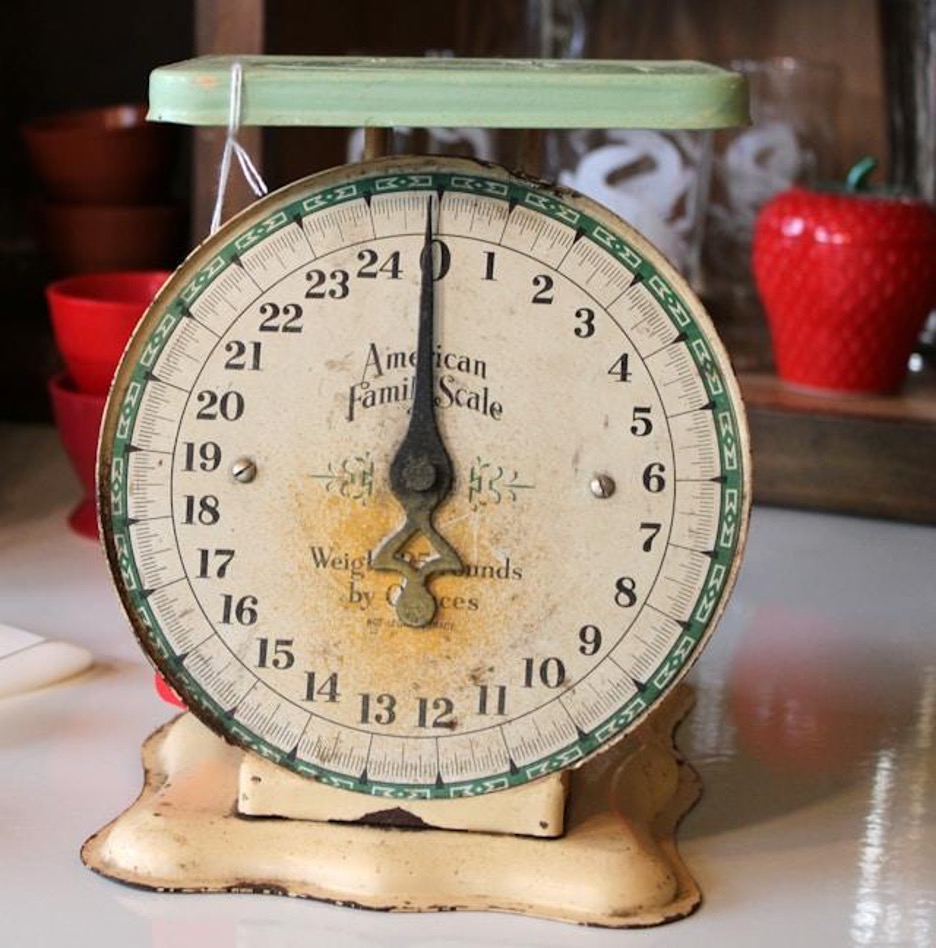
Reduce waste and save money
Throwing away food is wasteful and disheartening. Luckily, kitchen scales allow you to measure exactly what you need, which helps reduce waste. This can make a significant difference when following specific diets, planning weekly menus, or cooking for a set number of guests.
For instance, if a recipe requires 300 grams of chicken and you estimate it, you might end up with an excess that goes uneaten. Likewise, if a bread recipe calls for 500 grams of flour, you can take less but will have to eliminate the extra ingredients.
Precise cooking will help you avoid unnecessary waste and manage your budget effectively.
Easily switch between different units of measurement
Have you ever stumbled upon a great recipe online only to find that it uses grams instead of cups, or vice versa? Kitchen scales make it incredibly simple to convert values. Many digital scales allow you to toggle between grams, ounces, pounds, and milliliters with the touch of a button.
This feature is helpful for international recipes. European cookbooks often specify flour as “250 grams,” while American ones might say “2 cups.” With a scale, you can skip the guesswork and avoid hunting for conversion charts online — weigh your ingredients and start cooking!
Types of Kitchen Scales
Mechanical (Analog) Kitchen Scales
These scales operate using a spring mechanism. When you place an ingredient on the platform, the needle moves to indicate the weight on the dial.
They are best for general kitchen tasks where precision isn’t critical, such as weighing flour for cookies or vegetables for a salad.
Pros: No need for batteries. Sturdy and straightforward to use.
Cons: Not as precise as digital scales and may lose accuracy over time.
How to use them correctly:
- Ensure the scale is zeroed out before measuring;
- Carefully check the dial to prevent any miscalculations.
Digital Kitchen Scales
These scales utilize electronic sensors to provide precise measurements of ingredient weight. Using them, you can achieve accurate measurements for baking, managing portion sizes, and weighing small ingredients.
Pros: Extremely accurate, easy to read, and capable of measuring in various units (grams, ounces, milliliters).
Cons: They need batteries or a power source and can be sensitive to spills.
How to use them:
- Place the scale on a flat, stable surface.
- Always press the tare button to reset the weight before adding a new ingredient.
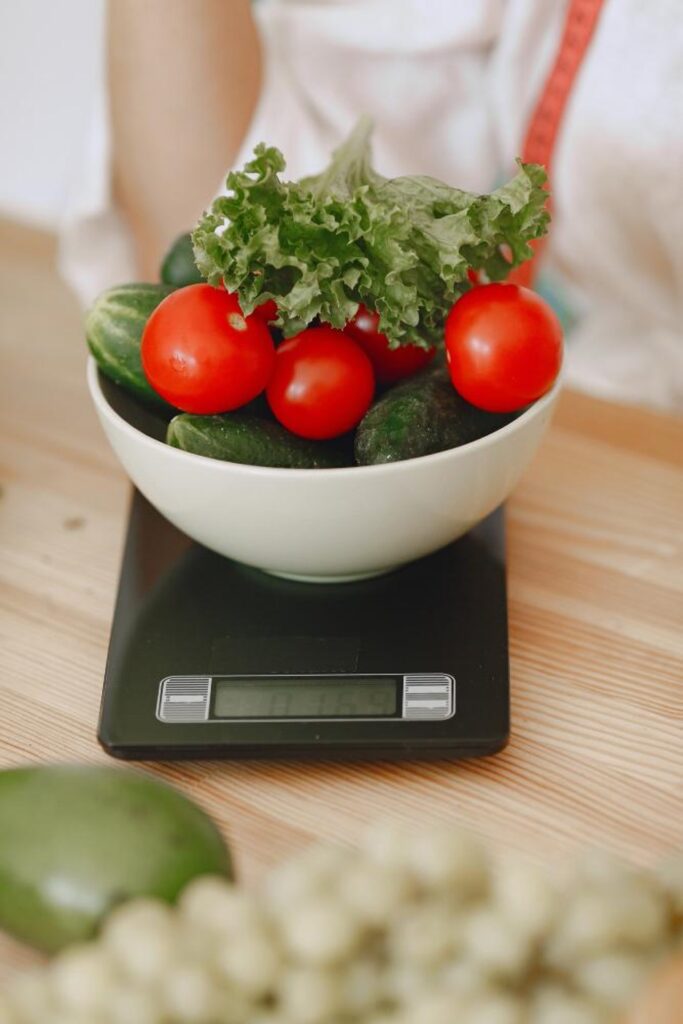
Balance Beam Scale
This classic scale measures food items using a beam and weights. It is especially useful for accurately weighing ingredients in historic kitchens.
Pros: Highly accurate and does not need electricity.
Cons: Bulky and requires separate weights for use.
How to use it: Before taking measurements, ensure the scale is balanced correctly. Then, select the appropriate counterweights to achieve accurate results.
Smart Kitchen Scale
These digital scales connect to apps through Bluetooth or Wi-Fi, enabling interactive measurement and tracking. They are best for tech-savvy home cooks, meal planners, and those monitoring their diets.
Pros: Provide advanced features, such as nutrition tracking, recipe integration, and precise measurements.
Cons: Tend to be pricier and require a smartphone or tablet.
To use them, just sync the scale with the app and follow the on-screen instructions for the best results.
Using a Kitchen Scale: Practical Hacks
How to use kitchen scale? The answer varies based on the scale type. However, a few versatile tips can help you get the most accurate measurements.
- Always use a flat base. A wobbly or uneven surface can lead to inaccurate readings. For the best results, place the scale on a stable, flat surface.
- Zero the scale (tare function). Always reset the scale to zero before adding ingredients to bowls or containers. It ensures that you’re only measuring the food weight.
- Weigh ingredients individually. When making a dish requiring multiple ingredients, weigh each separately instead of combining them all at once. This approach helps you avoid mistakes and ensures accurate measurements.
- Verify the consistency of measurement units. Many digital scales let you switch between grams, ounces, milliliters, and pounds. Be sure to use the unit of measurement indicated in the recipe; otherwise, you may get unexpected results.
- Clean and care for the scale. Remember to look after your kitchen tools! Wipe digital scales with a damp cloth, and avoid letting them come into contact with too much water. Keep mechanical scales free from dust and check the needle’s calibration regularly. Store the scale in a dry area to ensure it remains accurate throughout its lifespan.
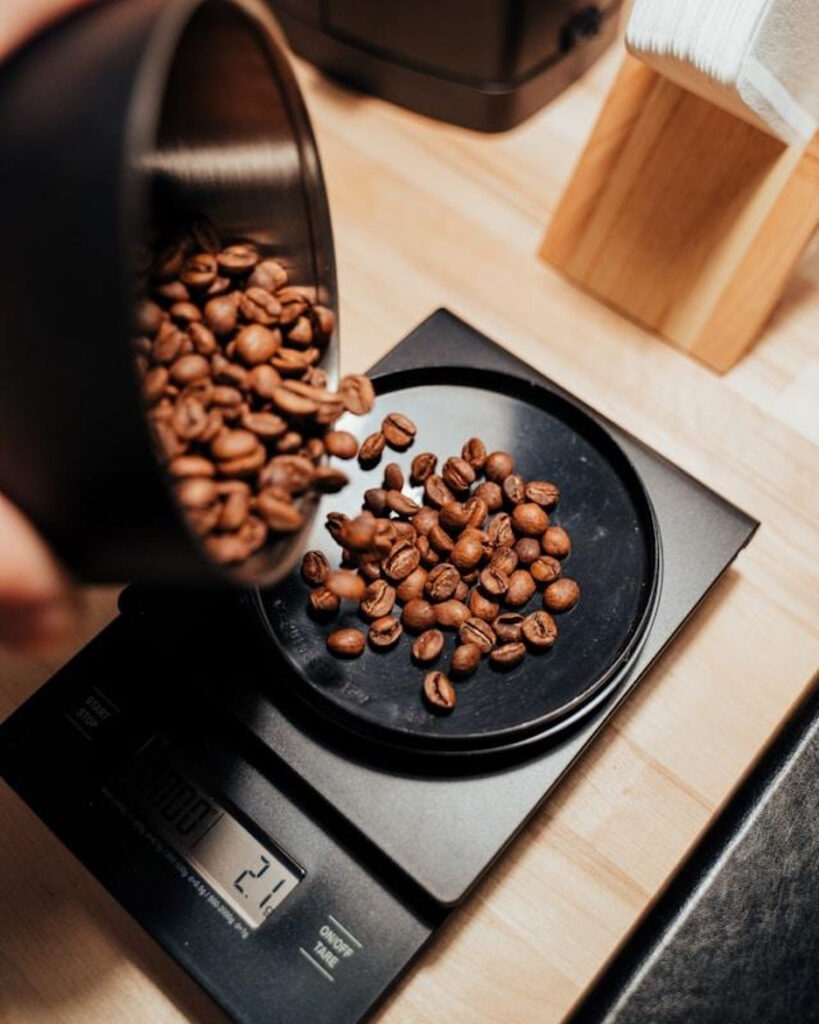
How to Choose a Kitchen Scale?
Have you decided to invest in this essential kitchen tool? Then, it’s time to learn how to make the best choice! Actually, selecting the scale is straightforward. Follow our tips!
Choose the Right Type of Kitchen Scale
As mentioned earlier, there are two primary types of kitchen scales ― mechanical and digital. Each has its benefits and weaknesses.
Mechanical (analog) scales
Pros: No batteries are needed. Sturdy and long-lasting. Can accommodate heavier weights.
Cons: Less precise.
Digital kitchen scales
Pros: More precise, measuring to the nearest gram or ounce. Easier to read thanks to a clear digital display. Include extra features like unit conversion, tare function, and power tracking.
Cons: Requires batteries or charging. Some models may not support heavy weights.
Which scales should you choose?
Do you value maximum precision? Choose digital models if you plan to use the scale for counting calories, making coffee, or baking.
Are you looking for a simple and practical option without batteries or additional functions? Mechanical scales will perfectly suit your needs.
Check the weight capacity
Different scales have varying weight limits, usually ranging from 2 kg (4.4 lbs) to 10 kg (22 lbs).
- A scale with a 5 kg (11 lbs) capacity works best for everyday cooking and baking.
- If you’re preparing larger batches, baking bread, or weighing bulk items, consider a model with a higher capacity.
- A compact precision scale with an accuracy of 0.1 g is perfect for measuring coffee or small ingredients.
Look for the tare function
The tare function is essential. Thanks to it, you can put the bowl on the scale, press a button to reset the weight to zero, and then weigh just the ingredients you add. For example, you can measure flour directly into a mixing cup, thus avoiding extra dishes to clean!
Select a scale that offers multiple units of measurement
This feature is helpful because some recipes use grams, while others may require ounces or pounds. A quality scale will enable you to switch between these units effortlessly.
Also, for optimal results, choose a scale with 1g or smaller increments to ensure its accuracy.
Evaluate display and readability
Choose a large backlit LCD screen to ensure clear visibility and ease of reading. This feature is particularly beneficial for viewing weight measurements in low-light conditions.
Helpful tip: When weighing ingredients in large bowls, ensure the container doesn’t obstruct the display.
Look for additional features
- Nutrition tracking: Scales can calculate calories, carbohydrates, fats, and proteins. These models are excellent for meal preparation and monitoring healthy eating habits and exercise progress.
- Bluetooth or app connectivity: Some smart scales connect with apps to help track nutrition data or store your results.
- Waterproof design: These scales must be in your kitchens if you can’t go without spills and splashes.
- Rechargeable battery: You can charge some scales via USB, saving you money in the long run.
Choose the right size and storage option for your needs
It all depends on your kitchen space. Compact and slim models can easily fit in a drawer. Heavier models with larger platforms are perfect for bakers and food preppers who weigh big bowls or pans. And folding or wall-mounted scales are ideal for small kitchens.
Choose models that are simple to clean and maintain
Look for a scale with a smooth surface and minimal buttons. Stainless steel or tempered glass scales are ideal for easy cleaning ― you can wipe them down effortlessly.
Avoid scales with grooves or lots of small buttons ― they can trap flour, sugar, or liquids.
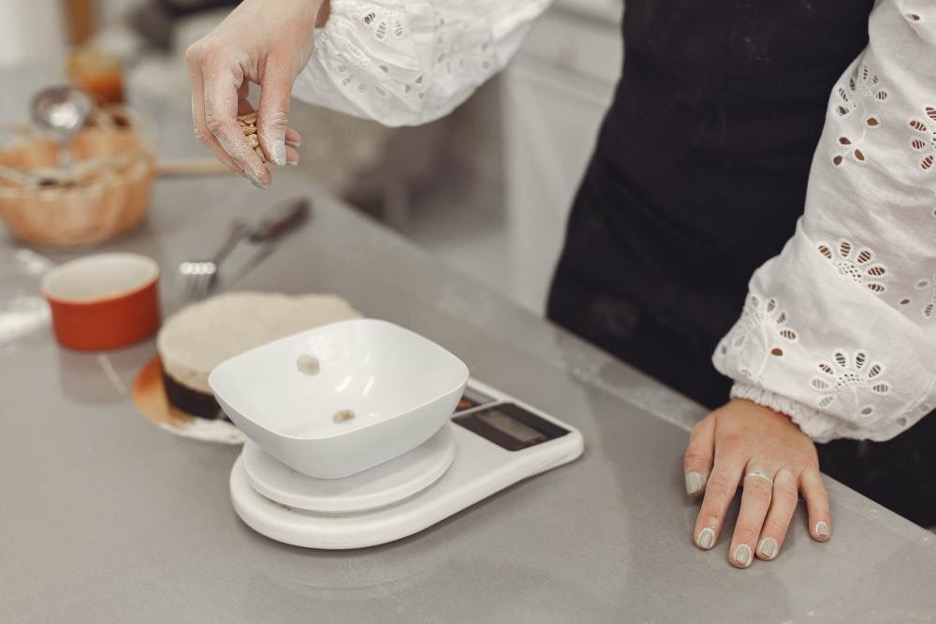
The Best Kitchen Scales for Your Needs
Do you still ask yourself, “Should I buy a food scale?” Here’s a straightforward guide to help you choose based on your specific requirements.
Bakers should opt for a digital scale with a tare function and 1g accuracy. It will be perfect for measuring flour, sugar, yeast, etc.
Health enthusiasts and meal preppers are recommended to look for a scale that includes menu tracking to help measure portions and macronutrients effectively.
Coffee lovers would love a precise scale with 0.1g accuracy ― essential for achieving the ideal coffee-to-water ratio.
Those looking for a model for general home use should choose a versatile digital scale with a 5kg capacity and a clear display.
Kitchen Scales for Home and Professional Kitchens: Pros and Cons
Kitchen Scales for the Home Kitchen
Such scales will make cooking more consistent. Your dishes will be delicious every time, enabling you to improve your cooking skills. Suppose you are baking a cake: 120g of flour is always 120g, but the size of a “cup” can vary depending on how you scoop it.
Moreover, you will be able to control the portions you eat. Weighing your food ensures precision if you’re monitoring calories and macronutrients. Whether you need 100g of chicken for your daily meal, 20g of snacks, or 300g of food for a special diet, a scale will help you measure it accurately instead of estimating.
With a scale, you will save time and reduce cleanup. Skip using multiple measuring cups ― just place the bowl on the scale and reset it to zero. Less mess means less time spent cleaning!
Avoiding waste is no less important. By using only the exact amount of ingredients needed, you’ll reduce food waste. For example, if a recipe calls for 250g of pasta, you can weigh it instead of cooking too much.
Kitchen scales are also a must-have for coffee lovers and culinary experiments. Do you enjoy barista-style coffee? The scale helps you measure the perfect ratio of coffee to water. It is also ideal for fermenting dough, making homemade cheese, or preparing gourmet dishes.
However, you should also account for some downsides:
- Not needed for daily cooking. You can do without buying scales if you don’t cook often or stick to simple recipes.
- Require batteries. Digital scales can lose power while you’re cooking, which can be inconvenient.
- Occupy space. Finding a place to store the scales can be challenging in a small kitchen. Consider opting for more compact or foldable models.
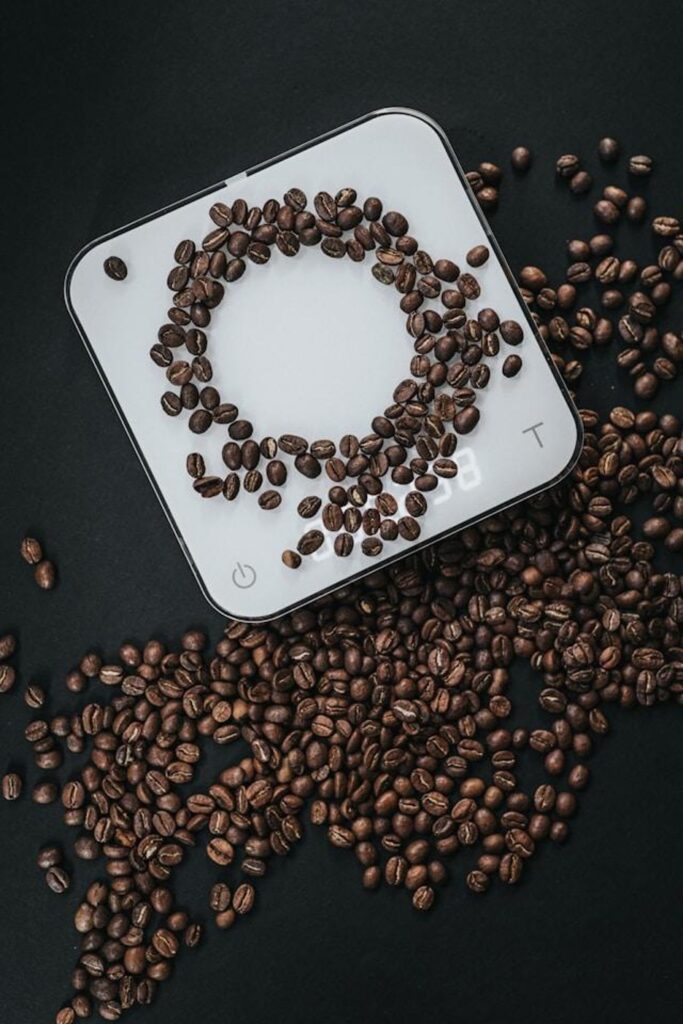
Kitchen scales in professional kitchens
Consistency and quality control are crucial for professional kitchens. In a restaurant, every dish must taste the same every time ― that’s what customers expect. Scales play a vital role in ensuring accuracy. Moreover, many ingredients used for cooking restaurant dishes are pricey, and using scales helps prevent portion overruns and keeps food costs in check.
Scales are also essential for large-volume recipes. In a professional kitchen, recipes are often scaled up to prepare larger batches of products and dishes. For example, if a recipe for one cake calls for 250 g of flour, making ten cakes requires precise weight adjustments.
Speedy meal preparation is also vital for cafes and restaurants. Many professional kitchens utilize pre-measured ingredients to enhance service speed. Сhef can pre-weigh all the ingredients for the most popular dishes, saving time on this process with each new order.
Nevertheless, even professionals notice certain downsides of scales:
- Slower speed of food preparation. Weighing every single ingredient in a restaurant kitchen isn’t practical. It can lead to significant delays in serving food, resulting in unhappy customers. What to do? Use scales for prep and baking. Actually, trained chefs estimate ingredient weights based on their experience during preparation.
- More equipment to maintain. A busy kitchen needs a heavy-duty commercial scale, which can be costly and take much space. Additionally, the scale requires regular cleaning and calibration to ensure maximum accuracy.
- Storage issues. Small kitchens might struggle to find counter space for a large industrial scale. In this case, consider using a compact digital scale for small, routine measurements. Either way, the results will be noticeable.
Verdict: Is a Food Scale Worth It?
Well, that depends on your personal preferences. If you enjoy baking, trying recipes from various cookbooks, or focusing on healthy eating, a kitchen scale is a must-have! On the other hand, if you only cook occasionally and aren’t too concerned about precise measurements, you can manage without one. However, scales are crucial for preparation and portion control in professional kitchens, although they aren’t used for every task.
Ultimately, a kitchen scale is like a secret weapon. You might not always need it, but its value is undeniable!
Want to BUY this product?
Check out retailer list for your country.
